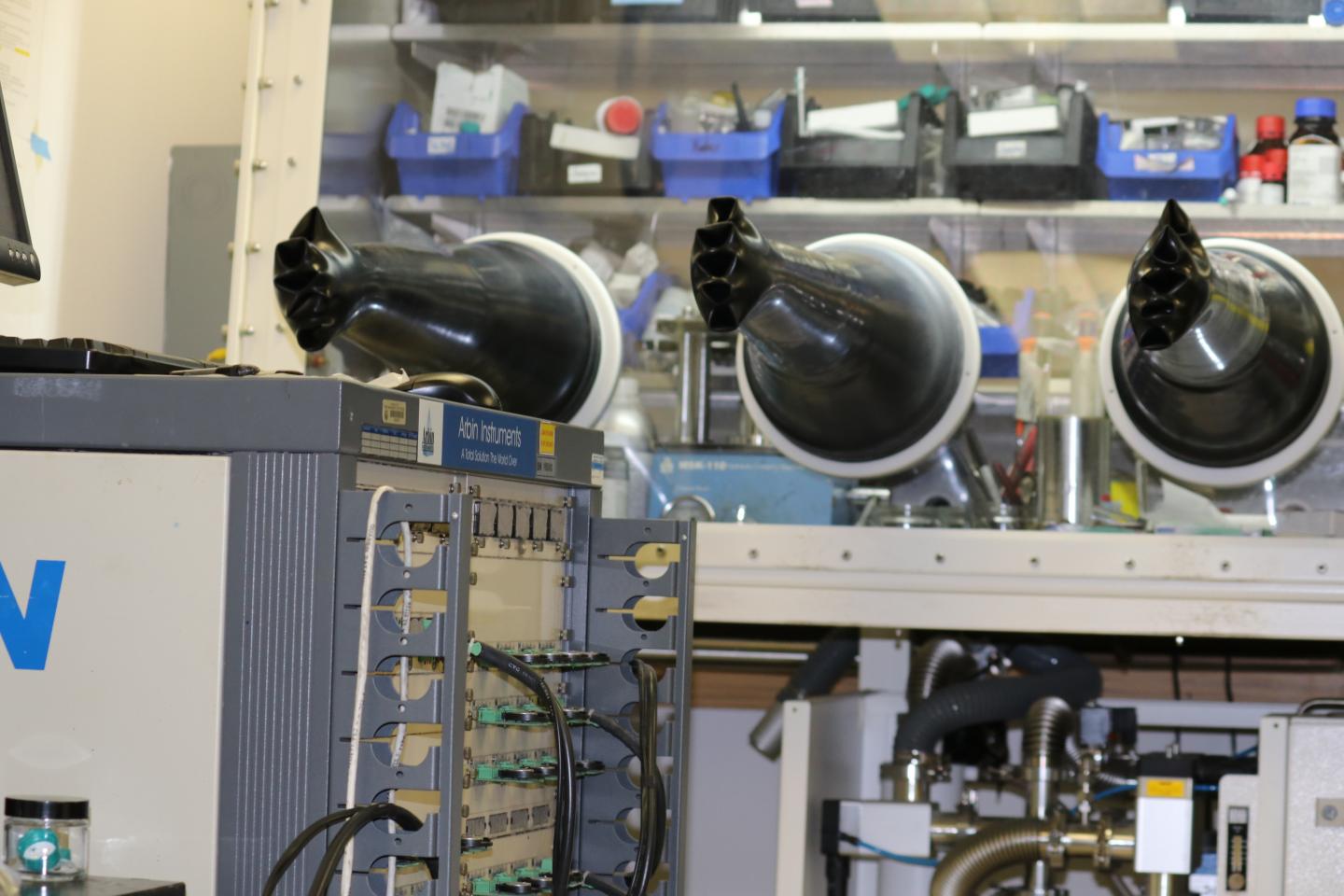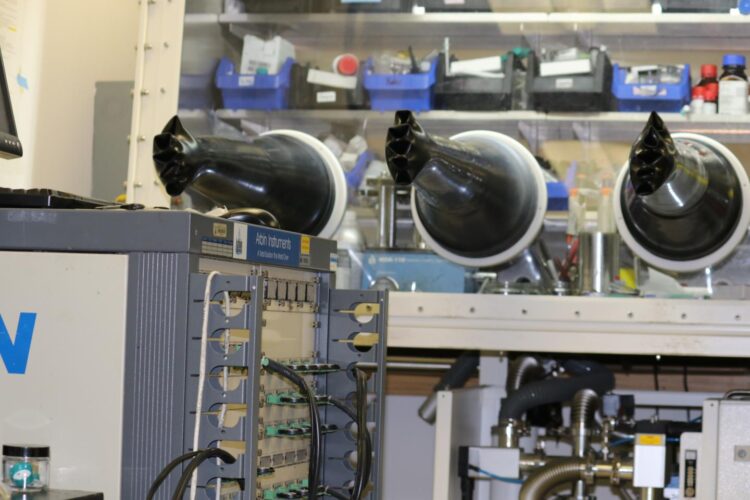
Credit: The University of Texas at Austin
For years, researchers have aimed to learn more about a group of metal oxides that show promise as key materials for the next generation of lithium-ion batteries because of their mysterious ability to store significantly more energy than should be possible. An international research team, co-led by The University of Texas at Austin, has cracked the code of this scientific anomaly, knocking down a barrier to building ultra-fast battery energy storage systems.
The team found that these metal oxides possess unique ways to store energy beyond classic electrochemical storage mechanisms. The research, published in Nature Materials, found several types of metal compounds with up to three times the energy storage capability compared with materials common in today’s commercially available lithium-ion batteries.
By decoding this mystery, the researchers are helping unlock batteries with greater energy capacity. That could mean smaller, more powerful batteries able to rapidly deliver charges for everything from smartphones to electric vehicles.
“For nearly two decades, the research community has been perplexed by these materials’ anomalously high capacities beyond their theoretical limits,” said Guihua Yu, an associate professor in the Walker Department of Mechanical Engineering at the Cockrell School of Engineering and one of the leaders of the project. “This work demonstrates the very first experimental evidence to show the extra charge is stored physically inside these materials via space charge storage mechanism.”
To demonstrate this phenomenon, the team found a way to monitor and measure how the elements change over time. Researchers from UT, the Massachusetts Institute of Technology, the University of Waterloo in Canada, Shandong University of China, Qingdao University in China and the Chinese Academy of Sciences participated in the project.
At the center of the discovery are transition-metal oxides, which are compounds that include oxygen bonded with transition metals such as iron, nickel and zinc. Energy can be stored inside the metal oxides — as opposed to typical methods that see lithium ions move in and out of these materials or convert their crystal structures for energy storage. And the researchers show that additional charge capacity can also be stored at the surface of iron nanoparticles formed during a series of conventional electrochemical processes.
A broad range of transition metals can unlock this extra capacity, according to the research, and they share a common thread — the ability to collect a high density of electrons. These materials aren’t yet ready for prime time, Yu said, primarily because of a lack of knowledge about them. But the researchers said these new findings should go a long way in shedding light on the potential of these materials.
The key technique employed in this study, named in situ magnetometry, is a real-time magnetic monitoring method to investigate the evolution of a material’s internal electronic structure. It is able to quantify the charge capacity by measuring variations in magnetism. This technique can be used to study charge storage at a very small scale that is beyond the capabilities of many conventional characterization tools.
“The most significant results were obtained from a technique commonly used by physicists but very rarely in the battery community,” Yu said. “This is a perfect showcase of a beautiful marriage of physics and electrochemistry.”
###
Media Contact
Nat Levy
[email protected]
Related Journal Article
http://dx.





